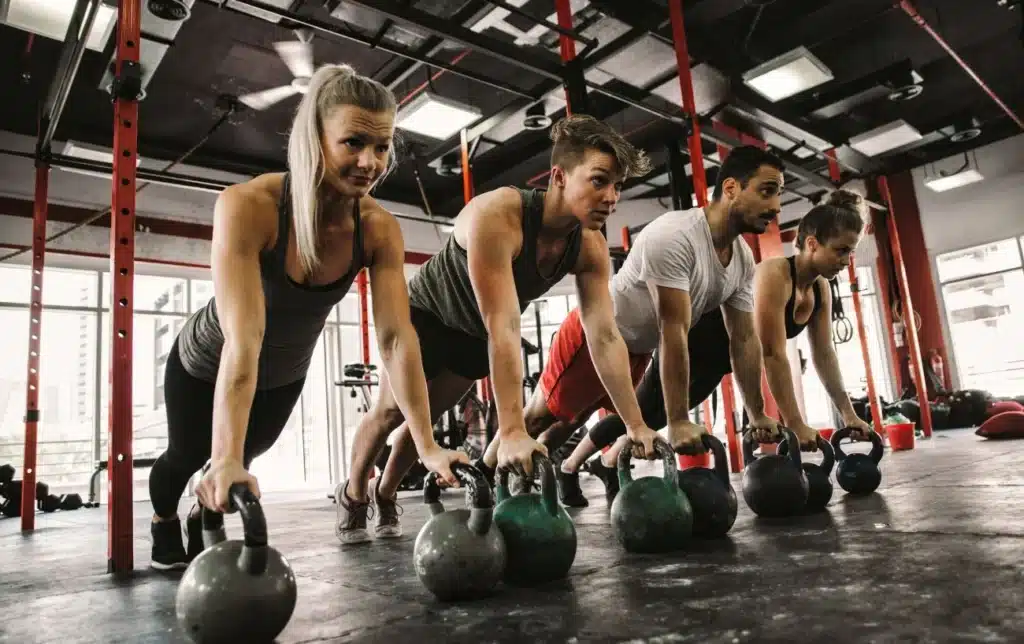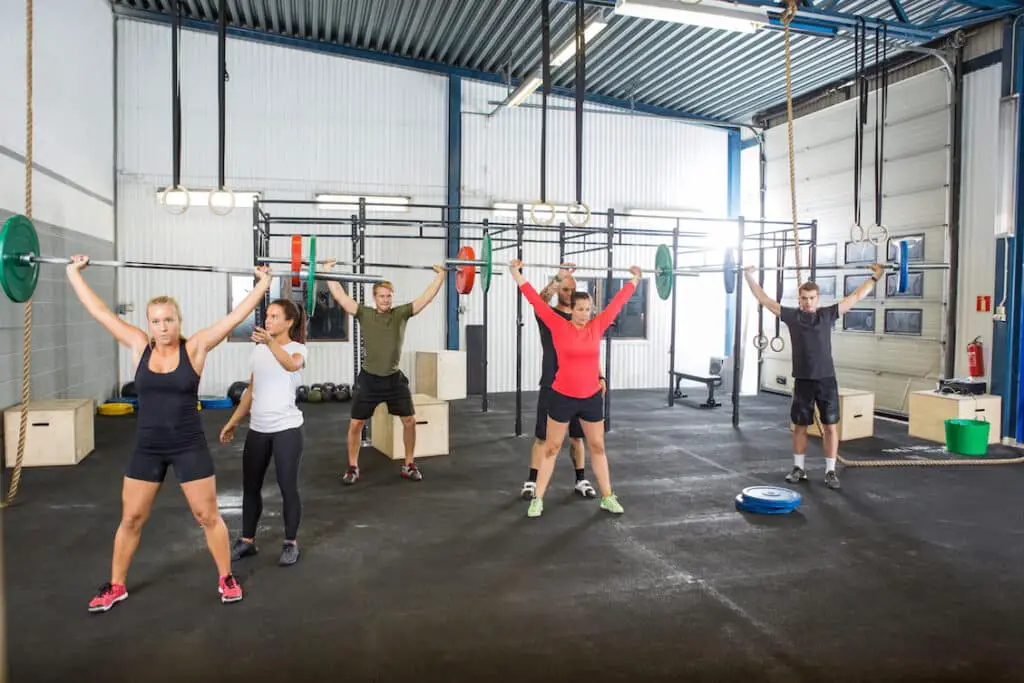Introduction
Is Crossfit Dangerous: This debate stems from both the intense nature of CrossFit workouts and the reported risks associated with the sport. On one hand, proponents argue that CrossFit’s emphasis on functional movements, varied workouts, and camaraderie fosters an unparalleled sense of accomplishment and community. They claim that, when performed correctly and under the guidance of experienced trainers, CrossFit can be a safe and efficient way to achieve fitness goals.
However, on the other hand, critics voice legitimate concerns about the potential dangers of CrossFit. High-intensity workouts, such as those commonly found in CrossFit routines, can lead to injuries, ranging from sprained joints to more severe conditions like rhabdomyolysis, a rare but potentially life-threatening condition resulting from extreme muscle exertion. Critics also point out that the competitive nature of CrossFit can push individuals to exceed their limits, leading to poor form and increased risk of injury.
In this exploration of the controversy surrounding CrossFit’s safety, we will delve into the various aspects that contribute to its perceived risks. We will consider the role of proper coaching, programming, and individual responsibility in mitigating these risks. We will also examine the prevalence of injuries within the CrossFit community and the extent to which they are preventable.

How risky is CrossFit?
Is CrossFit more dangerous than other types of training? Current evidence in the Journal for Sports Rehabilitation suggests that the injury risk from CrossFit training is comparable to olympic weightlifting, distance running, track and field, rugby, football, ice hockey, soccer and gymnastics.
Injury Risk: CrossFit workouts can be physically demanding and may involve lifting heavy weights and performing complex movements. This increases the risk of injuries, such as muscle strains, sprains, or more severe injuries like fractures and dislocations.
Overtraining: The intense nature of CrossFit can lead to overtraining if not managed correctly. Overtraining can result in fatigue, decreased performance, and a higher risk of injury. Proper rest and recovery are essential to mitigate this risk.
Rhabdomyolysis: In rare cases, extreme exertion in CrossFit can lead to a condition called rhabdomyolysis, where muscle tissue breaks down and releases toxins into the bloodstream. While this is rare, it underscores the importance of proper training and technique.
Technique Errors: Poor technique while lifting heavy weights or performing complex movements can increase the risk of injury. It is crucial to receive proper instruction and supervision, especially when starting CrossFit.
What are the disadvantages of CrossFit?
CrossFit is a high-intensity form of exercise. Your risk for injuries increases anytime you increase the intensity of your workouts or the amount of weight you’re lifting. Some common CrossFit injuries include: low back pain.
Risk of Injury
CrossFit workouts are demanding and often involve high-intensity exercises, including weightlifting, gymnastics, and plyometrics. These activities, when performed without proper technique or under excessive load, can increase the risk of injury. Common injuries associated with CrossFit include strains, sprains, muscle tears, and more severe injuries like fractures and dislocations.
Overtraining and Burnout
CrossFit encourages pushing your limits, which can lead to overtraining if not managed carefully. Overtraining can result in fatigue, decreased performance, increased susceptibility to illness, and chronic injuries. It’s crucial to incorporate sufficient rest and recovery periods into your routine to prevent burnout.
Rhabdomyolysis
Although rare, rhabdomyolysis is a severe condition that can occur with extreme exertion, often seen in CrossFit. It involves the breakdown of muscle tissue, leading to the release of toxins into the bloodstream. While this condition is infrequent, it underscores the importance of listening to your body and avoiding excessive workouts.
Cost
Joining a CrossFit gym can be relatively expensive compared to traditional gym memberships. Monthly fees, specialized equipment, and coaching services can add up, making it financially inaccessible for some individuals.
Who should not do CrossFit?
Those with autoimmune disorders may find it too hard to keep up with the CrossFit workouts, and people with fatigue-related disorders may pass out from the exertion. (It’s for these reasons that CrossFit trainers recommend consulting a doctor before trying CrossFit.)
Individuals with Pre-existing Medical Conditions
CrossFit can be physically demanding and involve high-intensity exercises. People with certain medical conditions, such as heart disease, hypertension, joint problems, or severe asthma, may be at higher risk when engaging in intense physical activity. It’s essential for individuals with such conditions to consult with a healthcare professional before starting CrossFit or to consider alternative, lower-impact fitness routines.
Beginners with No Prior Fitness Experience
CrossFit is known for its challenging workouts, and beginners with little to no prior fitness experience may find the intensity overwhelming. It’s advisable for newcomers to start with a more gradual fitness program that allows them to build a foundational level of strength and endurance before attempting CrossFit.
Those with Mobility Limitations
CrossFit often incorporates movements that require good joint mobility and flexibility. Individuals with limited mobility or a history of joint issues may struggle with certain exercises, increasing the risk of injury. It’s essential to address mobility limitations before attempting CrossFit and modify movements as needed.
People Who Are Pregnant
While exercise during pregnancy is generally encouraged, high-intensity workouts like CrossFit may not be appropriate for expectant mothers, especially those who haven’t been participating in CrossFit before becoming pregnant. Pregnant women should consult with a healthcare provider and consider safer prenatal exercise options.
Youth and Adolescents
CrossFit is generally not for children and adolescents, as their bodies are still developing, and intense, high-impact workouts can pose a risk to their growth plates and overall physical development. Instead, young individuals should engage in age-appropriate fitness activities.
Is CrossFit actually good for your body?
CrossFit is a form of high-intensity interval training and comparable to other high-intensity exercises. CrossFit exercises increase VO2max, strength, endurance, and improves the body composition (e. g. lean body mass).
Improved Overall Fitness
CrossFit is designed to enhance multiple aspects of fitness, including strength, endurance, speed, power, flexibility, and cardiovascular health. The variety of exercises and workouts can help you achieve a well-rounded level of fitness.
Efficient Workouts
CrossFit workouts are typically short and intense, making them time-efficient. Many people appreciate that they can get an effective workout in a relatively short period, making it easier to incorporate into a busy schedule.
Community and Support
CrossFit gyms often foster a strong sense of community and camaraderie among members. This can provide motivation and support, making it easier to stay consistent with your fitness routine.
Constant Variation
CrossFit workouts rarely follow the same routine, which keeps things interesting and helps prevent boredom. This variety challenges your body in different ways and reduces the risk of plateauing.
Functional Fitness
CrossFit emphasizes functional movements that mimic real-life activities. This can improve your ability to perform daily tasks and reduce the risk of injury in everyday life.
Is CrossFit better than gym?
The better one of the two depends on your fitness goals. If your primary aim is to build strength and increase muscle mass, then the typical gym could help you achieve this goal. But if your goals are body composition and increasing your anaerobic capacity, then CrossFit would be the better choice.
Varied and Challenging Workouts
CrossFit workouts are known for their diversity and intensity. They incorporate a wide range of functional movements, such as weightlifting, gymnastics, and cardio exercises. This variety can keep workouts interesting and challenging.
Community and Motivation
CrossFit gyms (often referred to as “boxes”) foster a strong sense of community and camaraderie. Exercising alongside others can provide motivation, support, and a social aspect that keeps many participants engaged.
Efficient Workouts
CrossFit sessions are typically shorter and more intense than traditional gym workouts, making them time-efficient. This can be appealing to those with busy schedules.
What age is it safe to start CrossFit?
CrossFit is a methodology, in theory, that can be safe, sustainable, and modifiable for people of all ages and abilities. This would include your 14 year old nephew. However, CrossFit is also an extreme sport where injury and overtraining occur often.
Maturity and Readiness
The age at which a child can safely begin CrossFit can vary widely from one individual to another. Physical maturity, emotional readiness, and the ability to follow instructions all play a role in determining readiness. Some children may be prepared to start as early as their teenage years, while others may need more time to develop the necessary skills and mindset.
CrossFit Kids Programs
CrossFit recognizes the importance of age-appropriate training. Many CrossFit gyms offer specialized CrossFit Kids programs designed for children as young as six or seven years old. These programs emphasize fun, fitness, and the development of fundamental movement patterns. They provide a safe and structured environment for children to explore fitness.
Supervision and Coaching
Regardless of age, proper supervision and coaching are crucial for ensuring the safety of young participants in CrossFit. Trained coaches who understand the unique needs of children and adolescents can them through workouts, emphasizing correct form and technique while preventing overexertion.
Focus on Technique Over Intensity
For youth engaging in CrossFit, the emphasis should be on developing proper technique rather than pushing for high-intensity workouts. Building a strong foundation of functional movement patterns is essential to prevent injuries and promote long-term fitness.
Is CrossFit safe for all ages?
Not only is CrossFit safe for kids, but it is also an excellent way to develop self-esteem and healthy habits while having fun. CrossFit Kids classes form part of a greater community committed to fostering a positive training experience and culture.
Supervision: Teens should participate in CrossFit under the guidance of trained coaches who understand adolescent development and safety protocols.
Emphasis on Technique: Proper technique should be a primary focus to prevent injuries and ensure a strong foundation of functional movement.
Modified Workouts: Tailored workouts should be designed to account for the unique physical development of adolescents.
Avoid Overtraining: Teens engaged in multiple physical activities, including CrossFit, should be monitored to prevent overtraining and burnout.
Is CrossFit stressful on body?
While CrossFit exercises have been shown to cause weight loss as well as increase strength and muscle building, they could cause adverse effects if you have AFS, especially in an advanced stage. CrossFit programs are very vigorous and could put a large amount of stress on your body.
High-Intensity Workouts
CrossFit workouts are designed to be intense, with participants pushing themselves to their limits. This intensity places a significant physical demand on the body, potentially leading to muscle fatigue, elevated heart rate, and increased stress on various body systems.
Risk of Overtraining
One of the primary concerns with CrossFit is the potential for overtraining. Overtraining occurs when individuals do not allow their bodies sufficient time to recover between workouts. This can lead to chronic fatigue, decreased performance, increased susceptibility to illness, and a higher risk of injury.
Impact on Muscles and Joints
CrossFit often incorporates heavy weightlifting and complex movements, which can put stress on muscles and joints. When performed with improper technique or under excessive load, these movements can lead to strains, sprains, muscle tears, and more severe injuries like fractures and dislocations.
Risk of Rhabdomyolysis
In rare cases, extreme exertion during CrossFit workouts can result in a condition called rhabdomyolysis. This condition occurs when muscle tissue breaks down and releases toxic substances into the bloodstream. While rhabdomyolysis is uncommon, it highlights the importance of responsible and measured training.

Conclusion
On the one hand, CrossFit offers numerous benefits. It promotes functional fitness, builds strength and endurance, and fosters a sense of community among its participants. Under the guidance of experienced coaches, following proper programming, and adhering to safety protocols, many individuals have successfully integrated CrossFit into their fitness routines without experiencing serious harm.
On the other hand, there are real risks associated with CrossFit. The high-intensity, competitive nature of the sport can lead to overexertion, poor form, and an increased likelihood of injury. Reports of injuries, including sprains, strains, and, in rare cases, more severe conditions like rhabdomyolysis, cannot be dismissed lightly.
The key to safely participating in CrossFit lies in responsible training practices. Coaches must be well-trained, attentive, and capable of scaling workouts to accommodate varying fitness levels. Athletes must prioritize technique over intensity, listen to their bodies, and avoid pushing themselves to the point of injury. Proper warm-ups, cool-downs, and mobility work are crucial in injury prevention.

